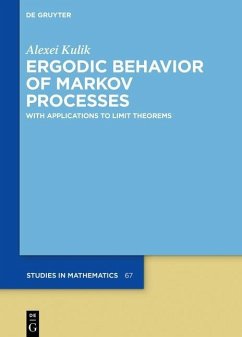The general topic of this book is the ergodic behavior of Markov processes. A detailed introduction to methods for proving ergodicity and upper bounds for ergodic rates is presented in the first part of the book, with the focus put on weak ergodic rates, typical for Markov systems with complicated structure. The second part is devoted to the application of these methods to limit theorems for functionals of Markov processes. The book is aimed at a wide audience with a background in probability and measure theory. Some knowledge of stochastic processes and stochastic differential equations helps in a deeper understanding of specific examples.
Contents
Part I: Ergodic Rates for Markov Chains and Processes
Markov Chains with Discrete State Spaces
General Markov Chains: Ergodicity in Total Variation
MarkovProcesseswithContinuousTime
Weak Ergodic Rates
Part II: Limit Theorems
The Law of Large Numbers and the Central Limit Theorem
Functional Limit Theorems
Contents
Part I: Ergodic Rates for Markov Chains and Processes
Markov Chains with Discrete State Spaces
General Markov Chains: Ergodicity in Total Variation
MarkovProcesseswithContinuousTime
Weak Ergodic Rates
Part II: Limit Theorems
The Law of Large Numbers and the Central Limit Theorem
Functional Limit Theorems
Dieser Download kann aus rechtlichen Gründen nur mit Rechnungsadresse in A, B, BG, CY, CZ, D, DK, EW, E, FIN, F, GR, HR, H, IRL, I, LT, L, LR, M, NL, PL, P, R, S, SLO, SK ausgeliefert werden.

